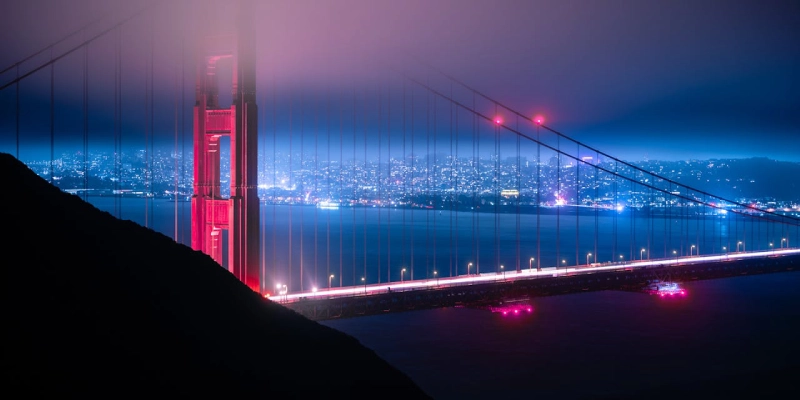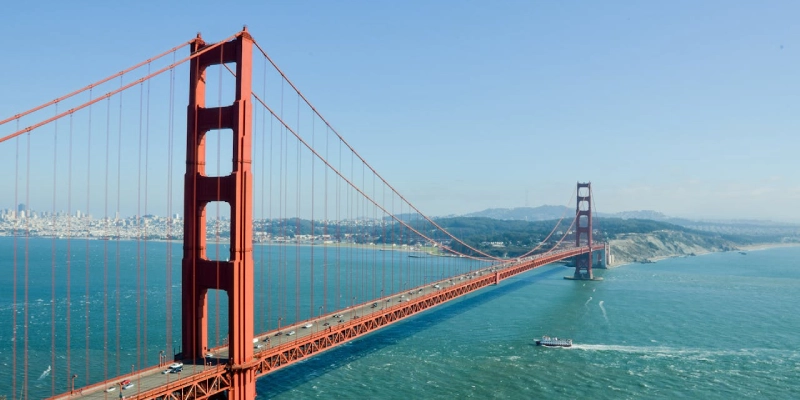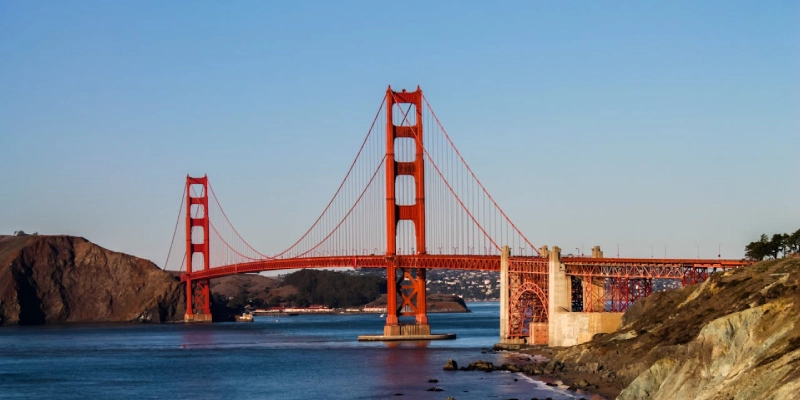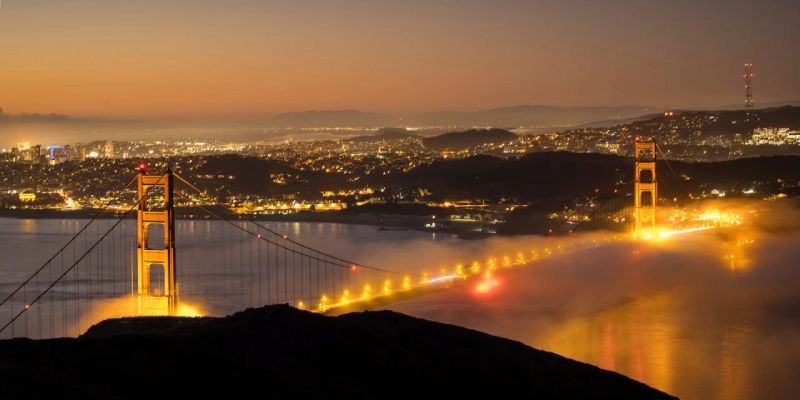Golden Gate Bridge: San Francisco's Iconic Span and Engineering Marvel
The Golden Gate Bridge, an internationally recognized symbol of American ingenuity and the vibrant spirit of San Francisco, majestically spans the Golden Gate strait. This iconic suspension bridge, famed for its "International Orange" hue, connects the city of San Francisco to Marin County, offering breathtaking views and standing as a testament to extraordinary engineering achievement against formidable natural challenges.
Conceived amidst skepticism and significant environmental obstacles—including strong currents, persistent fog, and seismic considerations—the construction of the Golden Gate Bridge began in 1933 and was completed in 1937. Under the leadership of chief engineer Joseph B. Strauss and with significant aesthetic contributions from architect Irving Morrow, who selected the distinctive color and Art Deco stylings, the bridge was once the longest and tallest suspension bridge in the world, a monumental feat for its time.
More than just a vital transportation artery, the Golden Gate Bridge is a premier tourist destination. Visitors can walk or bike across its 1.7-mile length, explore various viewpoints like Battery Spencer or Vista Point for stunning photographs, learn about its history at the Welcome Center, and simply marvel at its grandeur. Its striking design and dramatic setting make it one of the most photographed bridges globally, captivating millions each year.
- Impressive Scale: Features a main span of 4,200 feet (1,280 m) and towers rising 746 feet (227 m) above the water.
- Challenging Construction: Overcame treacherous currents, deep waters, and persistent fog during its four-year construction.
- International Orange Color: Chosen by Irving Morrow to complement the natural surroundings and enhance visibility in fog.
- Art Deco Styling: Elegant Art Deco elements adorn the towers, lighting fixtures, and railings, adding to its aesthetic appeal.
- Pioneering Safety Measures: Included a revolutionary safety net during construction, saving the lives of nineteen men (the "Halfway-to-Hell Club").
- Walk or Bike Across: Dedicated pathways allow pedestrians and cyclists to traverse the bridge and enjoy panoramic views.
- Key Viewpoints: Visit Battery Spencer (Marin Headlands), Vista Point (North & South), and Fort Point National Historic Site for iconic photo opportunities.
- Welcome Center: Explore exhibits on the bridge's history, engineering, and see a 12-foot replica.
- Guided Tours: Participate in free walking tours led by San Francisco City Guides or opt for audio tours.
- Bay Cruises: Experience the bridge from a different perspective with boat tours that sail underneath and around it.
- Naming Origin: Named after the Golden Gate Strait, the entrance to San Francisco Bay from the Pacific Ocean.
- Traffic Volume: Approximately 112,000 vehicles cross the bridge every day.
- Constant Painting: The bridge is continuously painted to protect the steel from the corrosive salt air.
- Distinctive Fog Horns: Features six fog horns that emit varying tones to aid navigation during foggy conditions.
- Not Always Orange: The U.S. Navy initially proposed painting it with black and yellow stripes for visibility.
- Global Icon: Recognized worldwide as a symbol of San Francisco, California, and American engineering prowess.
- Vital Transportation Link: Connects San Francisco with Marin County and northern California regions.
- Engineering Landmark: Celebrated as one of the "Seven Wonders of the Modern World" by some sources.
- Cultural Inspiration: Featured in countless films, photographs, artworks, and literary works.
- Tourism Catalyst: Attracts millions of tourists annually, significantly benefiting the regional economy.
- Continuous Maintenance: Rigorous program of painting and steelwork to combat rust and maintain structural integrity.
- Seismic Retrofitting: Major ongoing and completed projects to ensure the bridge can withstand significant earthquakes.
- Advanced Monitoring Systems: Utilizes modern technology to monitor structural health and traffic conditions.
- Safety Enhancements: Installation of a suicide deterrent system (expected to be fully operational by early 2024, so well established by May 2025) and ongoing improvements for pedestrian/cyclist safety.
- Preserving Historical Integrity: Commitment to maintaining the bridge's iconic appearance and Art Deco features during all work.



